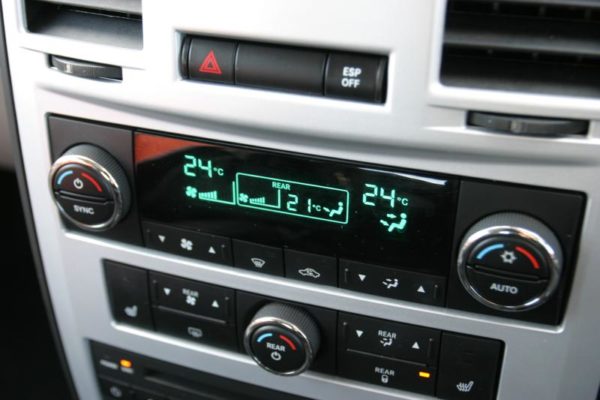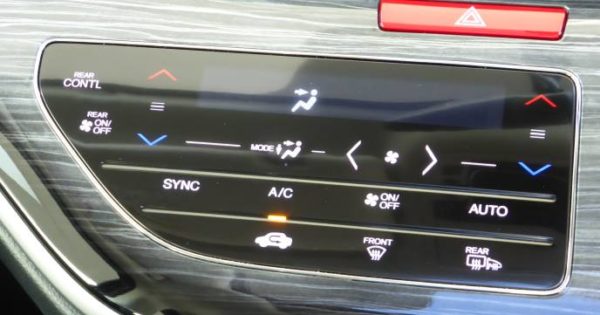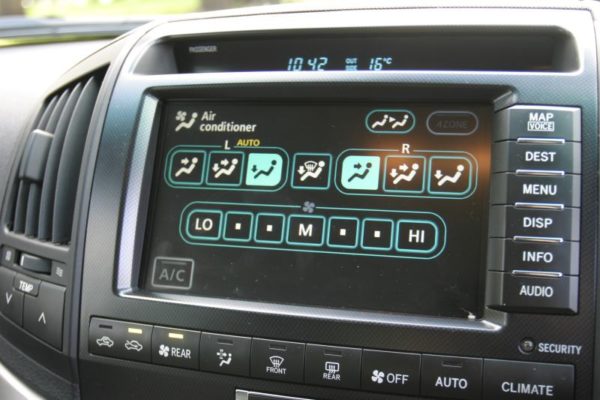How does a car’s air conditioning system work?
Summer heat can make motoring uncomfortable, while winter dampness fogs up your windows. Air conditioning can deal with both, leading the driver to be less distracted by driving conditions that aren’t ideal.
How do you operate air conditioning?
There are up to six controls for single-zone air conditioning:
- Air conditioning on/off: engages the air conditioning system, or simply uses the fan to circulate untreated air
- Fan speed: from a gentle, wafting breeze through to a turbulent cyclone
- Temperature: systems will usually go down to between 16-18 Celsius and up to 30-32 Celsius, depending on the make and model of vehicle
- Zone: where the air conditioning is focused (either footwell, at the occupants, at the glass or a mixture)
- Recirculate: whether the car draws air from inside the vehicle or outside the vehicle
- Demist: turns on the rear windscreen demister

Some vehicles have ‘climate control’ or an automated setting which, by using a thermostat, attempts to keep the cabin temperature consistent by varying the temperature setting and/or fan speed.
Dual-zone and triple-zone air conditioning has two or three temperature controls.

A button for quickly demisting the front and side windows is sometimes present. This turns on the air conditioning, directs the air to the windscreen and side windows and turns the fan on full. If fitted, it will also activate heated wing mirrors.
Depending on the vehicle, air conditioning can be controlled by manual dials, as in the examples above, or using a touchscreen or other flat panel method.



How does air conditioning make the air cold in a car?
The components
The air conditioning system contains a number of parts, half of which work in low-pressure and half in high-pressure.
Refrigerant: this is a liquid/gas chemical which absorbs and releases heat. In modern vehicles it is R134a, whereas older vehicles have r-12 Freon. At low pressures and temperatures it’s a gas while at high pressures and temperatures it’s a liquid.
Compressor: the compressor compresses the refrigerant and circulates it within the air con system. Compressing it turns it into a liquid. The compressor requires power which is drawn from the engine.
Expansion valve: this nozzle lowers the pressure of the refrigerant liquid, atomising it into a gas
Dryer: the dryer cleans the refrigerant of impurities and moisture. This prolongs the life and maintains the effectiveness of the refrigerant and stops ice forming in it.
Condenser: this takes the gas refrigerant and condenses it into a liquid. It’s usually in front of the vehicle’s radiator and looks like a small radiator.
Evaporator: heat is transferred to the refrigerant from air blown across pipes that contain the refrigerant.
How the air con works
The start of the high-pressure part of the system is the compressor. The refrigerant is compressed by the compressor to turn it from a gas to a liquid so it can be circulated through tubes in the condenser. This also adds heat. The refrigerant gets to 80-85°C.
Air from outside is passed over the condenser’s tubes which drops the temperature by around 30°C. It then goes to the dryer where any moisture and impurities are removed. This cools the liquid even further.
It is passed to the expansion valve where the pressure is lowered and it mostly converts to gas. This starts the low-pressure part of the system. The gas goes to the evaporator. At this point it is cold. Hot air from the vehicle’s interior is passed over it using fans. The hot air transfers its heat to the evaporator and is returned to the cabin using the vents. This air is much drier which is why it’s great for demisting windows.
As the refrigerant is heated by the hot cabin air it starts turning back into a gas where it circulates back to the compressor to begin this cycle again.
- Understanding the National Standards for Riding Mopeds and Motorcycles
- Livestock Transport Rules UK: A Complete Guide to Animal Transportation Requirements
- The Role of Safety Advisers in Dangerous Goods Transport
- Sustainable Driving: Reducing Your Environmental Impact on the Road
- Developing Effective Lesson Plans for Driver Training
- UK Agricultural Vehicle Registration and Tax Relief
- Challenges of Transporting Radioactive Materials (Class 7)
- Exemptions and support for Clean Air Zone charges
- Navigating Legal Requirements: The UK Motorcycle Licensing Rules
- Safe Transportation of Agricultural Chemicals and Hazardous Materials
- Innovations in Vehicle Construction for ADR Compliance
- Motorcycle Recovery Operations: How to Recovery a Broken Down Motorbike
- Alternative Fuels in Agricultural Vehicles
- Carriage of Dangerous Solids in Bulk Containers
- Understanding Limited Quantity Exemptions in ADR